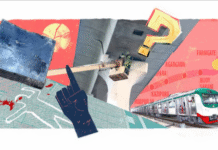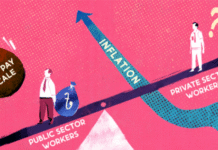The law enforcement agencies are carrying out their ‘gunfights’ in full swing to tackle violence, raising the number of victims to 47 so far during the non-stop blockade.
And now so-called accidents and mob beatings have been added to this. Bullet-ridden bodies are turning up. Then murder cases are being filed against persons accused of being associates of those killed in the ‘gunfights’. Several bullet wounds are being found on the bodies of the killed persons.
So far 47 persons have been killed in this manner over 51 days. Of these 33 died in “gunfights”, “road accidents” and “mob beatings”. Seven bullet-ridden bodies were discovered.
In this span of time, 57 persons died in petrol bomb attacks, cocktail blasts and arson. Four died in clashes at the beginning of the violence.
Of the 33 people killed in gunfights, 11 are of BNP-Chhatra Dal, 10 of Jamaat-Shibir, five alleged criminals and robbers, one extremist (for Jubo League activist) and one Yaba drug dealer. The remaining four were involved in various professions. They included a driver, a mosaic worker, a trader of Kawran Bazar, a tyre shop employee and a mobile phone repair shop employee.
The police did not give any details of their identity. The families of almost all these killed persons claim that they were picked up a day to two weeks before being killed in the ‘gunfights’. The law enforcement agencies claim they were caught while carrying out subversive acts. Then there are also those who were picked up beforehand, but were killed in gunfights.
The families of the four killed in ‘road accidents’ claim that the law and order forces nabbed them and then killed them. Two of the four were BNP activists of Manirampur in Jessore, one was a Chhatra Shibir activist from Chapainawabganj and one was a local criminal from Comilla.
Six of the seven persons whose bullet-ridden bodies were found, were BNP-Chhatra League persons. One of them remains unidentified.
In the past it was mainly professional criminals who were killed in ‘gunfights’, but in recent times most of the killed persons are political activists. Some of them faced charges of committing sabotage.
Prothom Alo spoke to several officers of the Dhaka Metropolitan Police, the Detective Branch (DB) of police and RAB. They said, this stern decision had been taken in order to quell the extreme violence that had arisen. They support the statements made by their seniors about dealing brutally with brutality. They feel they are fighting against crime, but in support of the common people.
They dismiss the possibility of innocent people being victimised by such measures, saying that the criminals are being identified before action is taken.
In reply to a question against extra-judicial killings, Inspector General of Police (IGP) AKM Shahidul Huq said at a press conference in the RAB headquarters last Wednesday, “Everyone has the right to self-defence. If anyone attacks the police, the police will use their right to self-defence. If any incident occurs, there will be administrative investigation. The police are accountable. The police are accountable to the court, to the people and to their senior officers.”
One officer said that these ‘gunfights’ would later be plus points in their professional evaluation. Incidentally, among the police and RAB officers awarded for their heroic work and bravery, 18 were rewarded for ‘gunfights’.
In the annual report of the legal rights group Ain O Salish Kendra, it is stated that 128 people were killed in ‘gunfights’ before and after the elections last year.
Another dimension to the tale
In the recent police reports regarding ‘gunfight’, it is being said that the persons were shot by their associates. Then the police identify their associates or accuse unidentified associates and charge them with murder.
The police arrested six Shibir activists in the morning of 7 February after a police sergeant was attacked in Shyamoli of the capital city. The same night one of the arrested persons, a madrassa student, was killed in a ‘gunfight’ with the police.
Ganesh Gopal Biswas, officer-in-charge of the Sher-Bangla Nagar police station, said, Shibir activists had taken up position in Taltala between three to four in the night. When the police took Jasim there, the activists opened fire on the police and threw crude bombs. They grabbed Jasim from the police and the police shot 21 rounds in retaliation. The activists fled. Jasim was killed by a bullet of the miscreants.
Ganesh Gopal said, the police were shooting with shotguns and the bullets in the body did not match the police bullets. That is why it was said that he was shot by the miscreants. A similar description of ‘gunfight’ and ‘miscreants’ was given about the killed Jamaat leader Imrul Kayes of Narail, Chhatra Dal leader Nuruzzaman Johnny of Khilgaon, Mobile phone shop assistant Russell of Keraniganj and Sramik Dal leader Abdul Wadud Bepari of Mirpur. The police have filed murder cases in each of these incidents.
The number of bullets increase
In the police investigation report on the killing of Imrul Kayes in the ‘gunfight’, it was said that there were 19 bullet wounds in his body. There were 16 bullet wounds in the body of Khilgaon Chhatra Dal general secretary Nuruzzaman Johnny. There were 54 bullets wounds in the bodies of the three persons killed last Sunday in Mirpur in a ‘mob beating’, 22 bullets wounds in one of the bodies, 15 in another and 17 in yet another.
Shooting on suspicion is also taking place. On 15 February BNP leader Mashiur Rahman (50) of ward no. 1, Shatakhali union, in Magura, was shot dead by the police. He worked as a painter. His family and the local villagers said that a local Awami League leader had got the contract to renovate the Shatakhali union parishad building. Mashiur Rahman has worked at the site the whole day and in the evening was having a cup of tea at Chhaigharia Natun Bazar. When the police arrived, he fled in fear. The police caught him and shot him in the legs. He died of excessive bleeding.
Source: Prothom Alo










